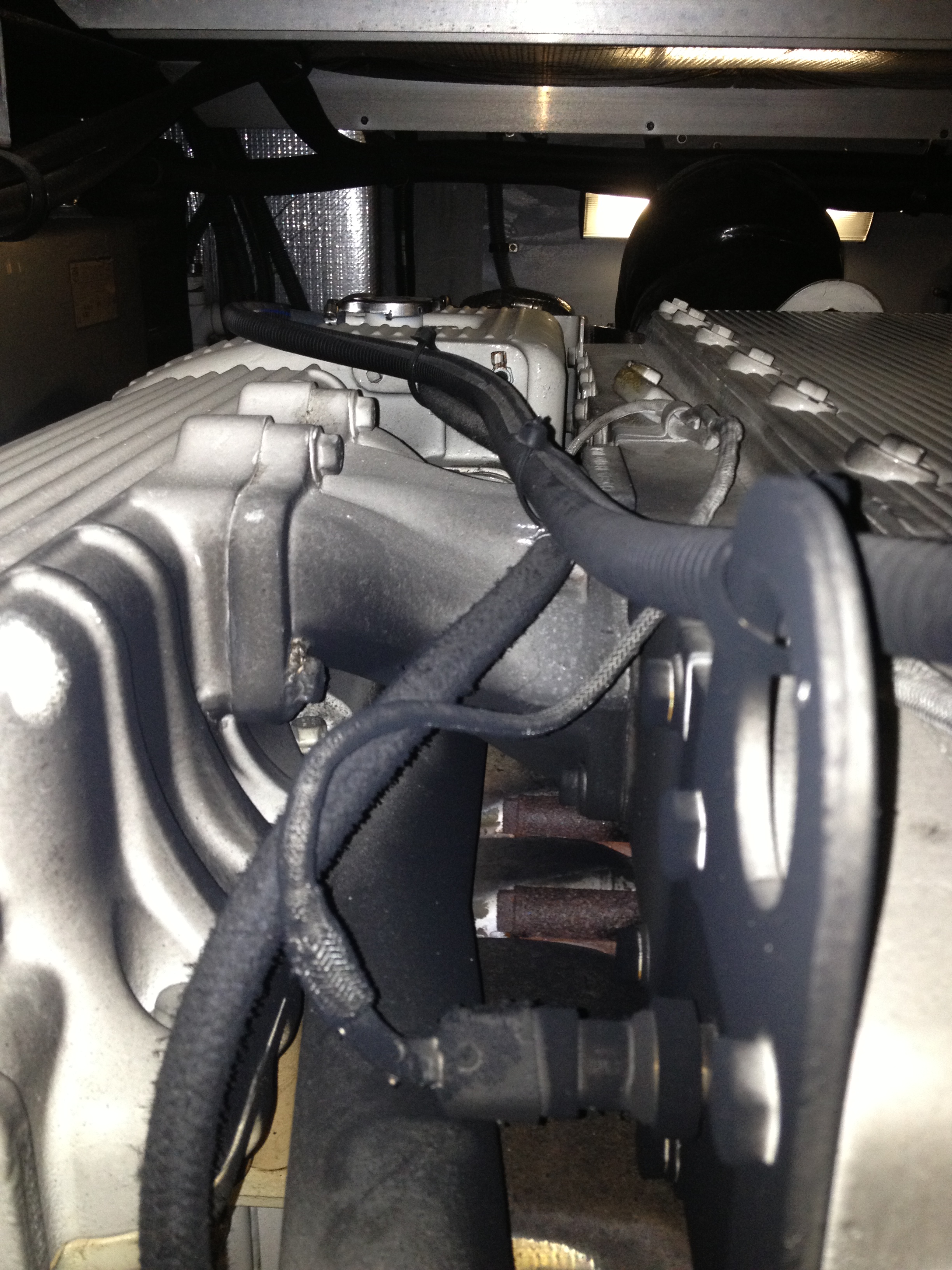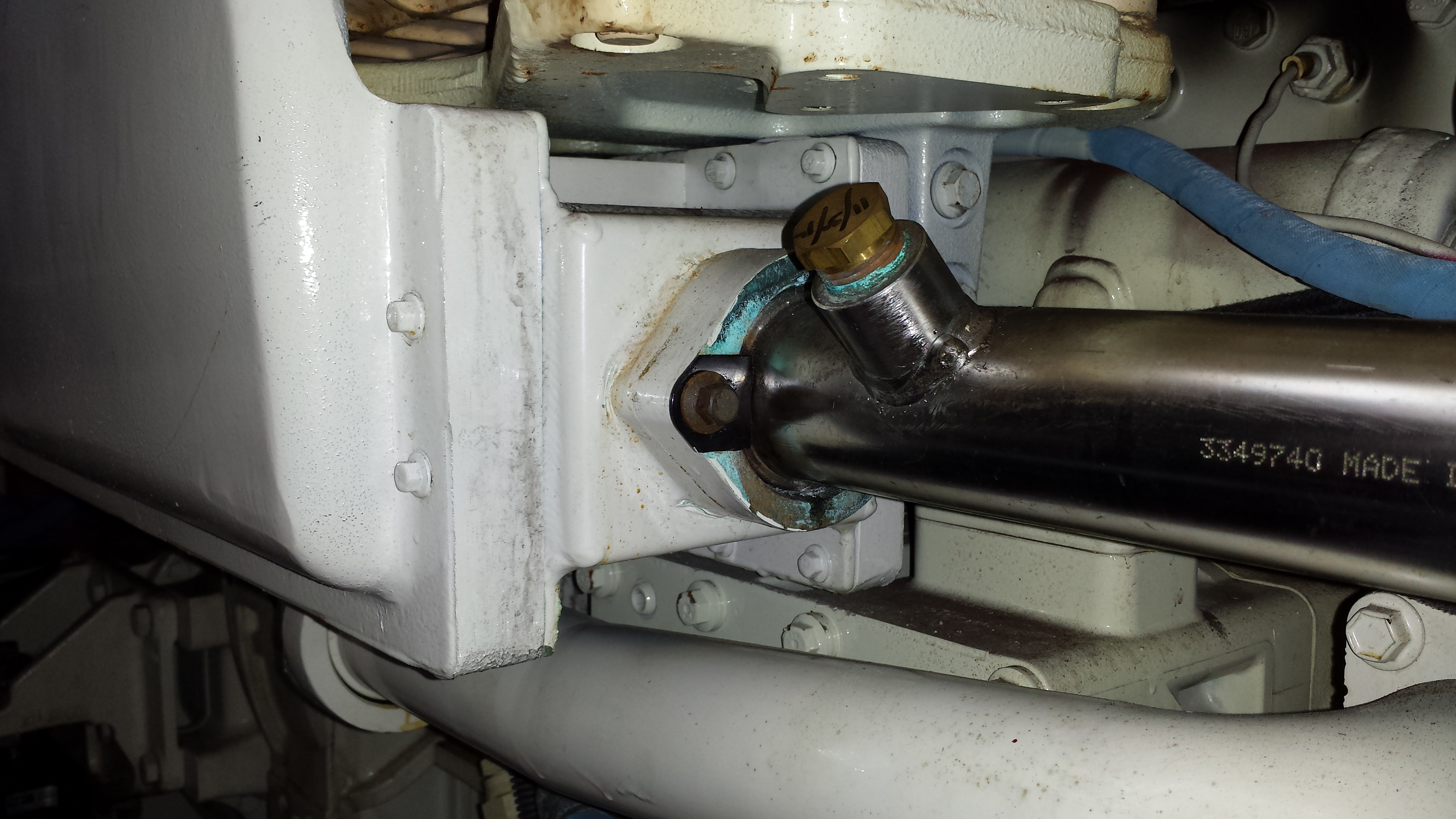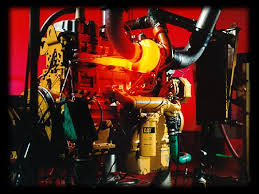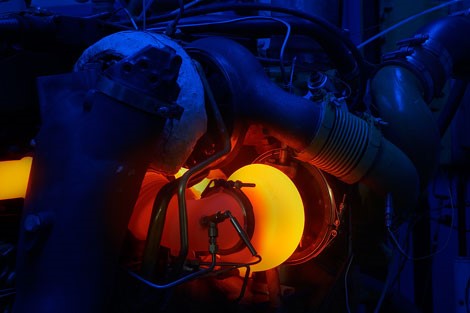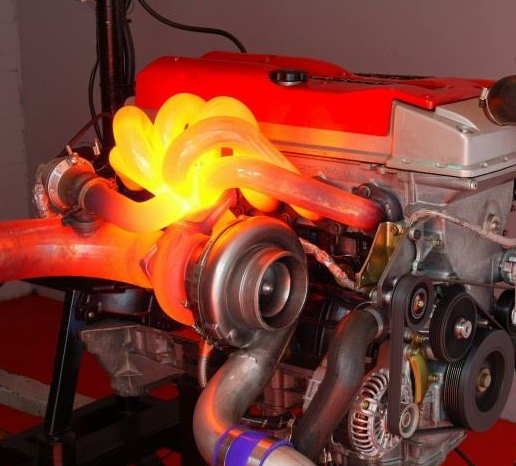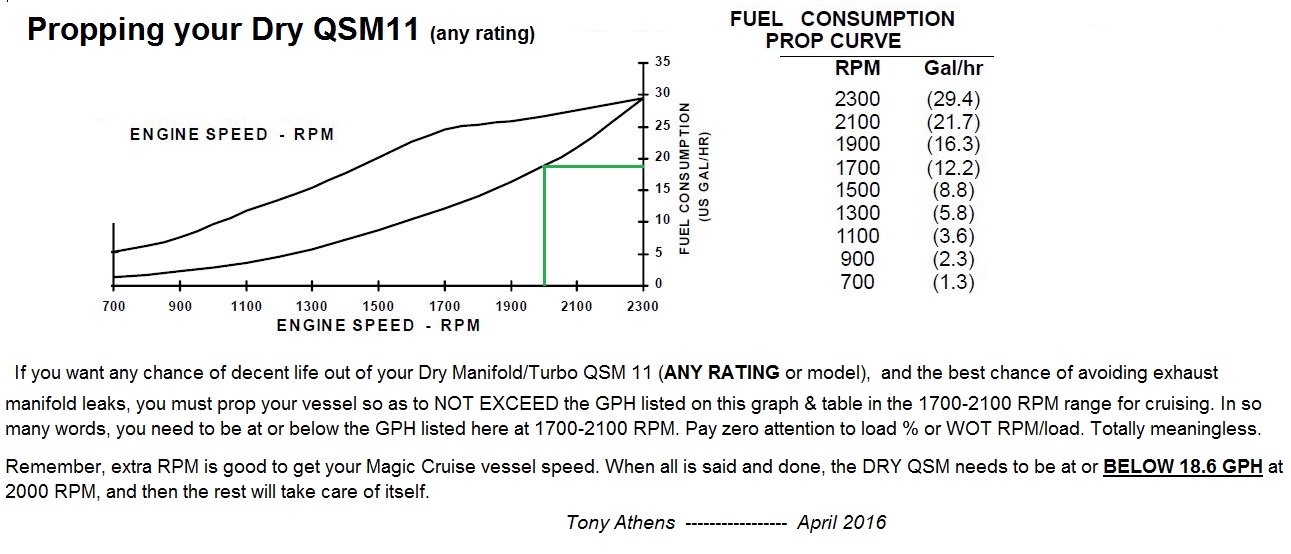The Symptoms
The QSM11 marine engine is in a class of its own due to the fact that it is still equipped with both a DRY exhaust manifold and a DRY turbo. Dry meaning that those components, unlike others in the Cummins Marine engine lineup, do not circulate coolant through the components for cooling purposes. Rather, the dry components are covered with heat shields.
The Cause
The dry manifolds and turbos Cummins uses on the “DRY” QSM 11 do not hold up well at all if the engine if loaded much above the “535” QSM 11 performance curve (no more than 400 HP or 20 g/h at 2100 RPM)……………… there’s just too much heat with no place to go.
Look at this picture of the RED-HOT manifold. This is what is happening under your “tin-foil wrapped” exhaust manifold & turbo… excessive load = excessive heat. Just because your local “Cummins Tech” says all is good and is propped right as long as your 635 or 670 QSM is reaches its rated RPM or 2300 or a tad more, IMO, it is far from OK if you want to help prevent early exhaust manifold leaks or worse… The damage to the turbo’s and manifolds do not happen at WOT, it all happens in the 1800-2000 RPM range where most boats burn over 20 GPH, with 22-24 GPH all too common at around 1900 RPM. This is where the issue is that warps the manifolds and turbo bases.
All diesel engines, by design, lose about 33% of all the energy made (heat) burning fuel out the exhaust… So if you are burning 20 gallons per hour, that means the crankshaft is putting about 400 HP into the prop to move your boat forward, and about 400 HP thru the exhaust.
Look at the chart below to see how it works.
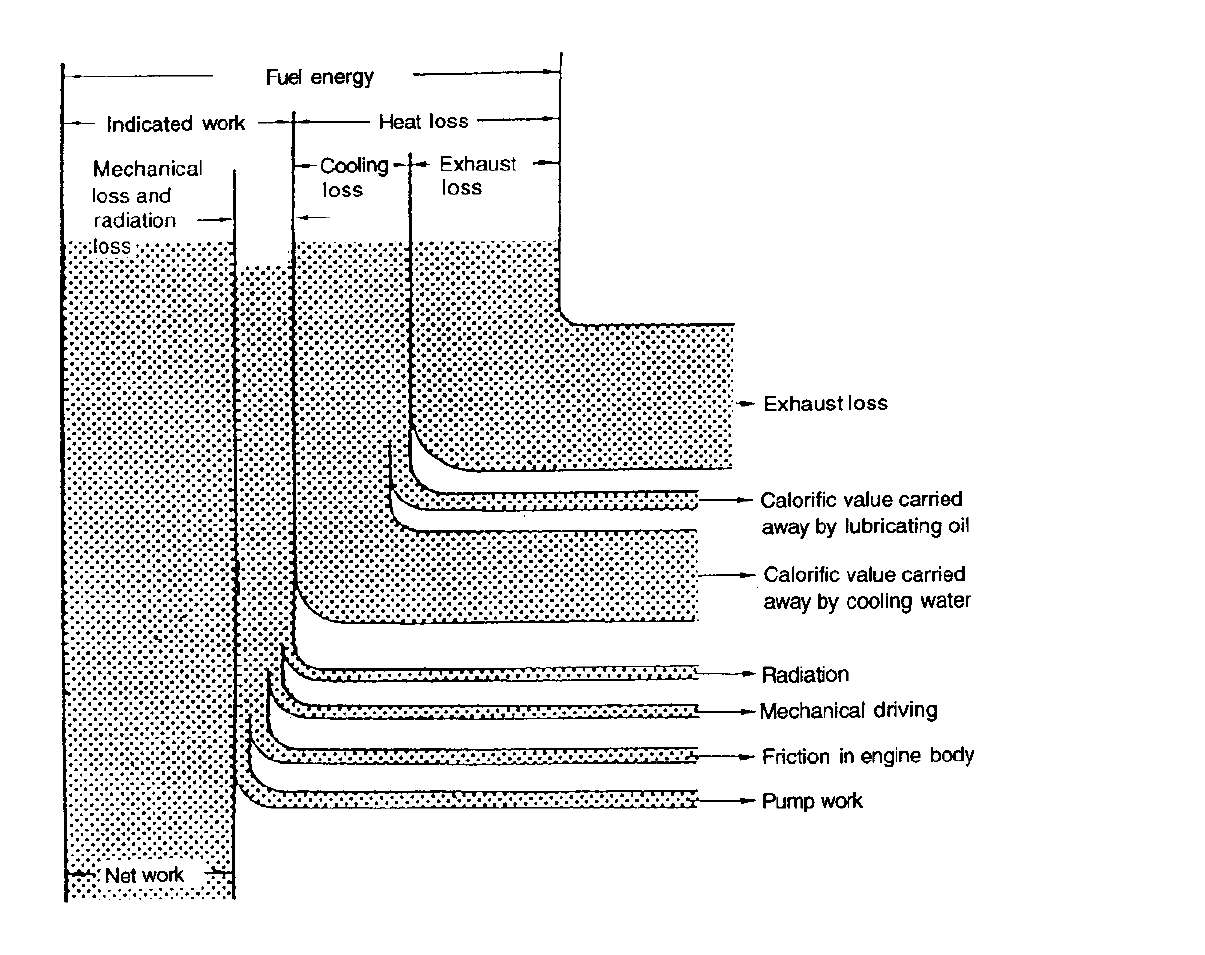
Given the high horsepower nature of the DRY QSM11 engine, it’s easy to see why engines can and usually are grossly overloaded in the 1800-2000 RPM range. It’s the high HP and/or high fuel burn at the lower RPM’s that does the manifolds & turbos in.
The Solution
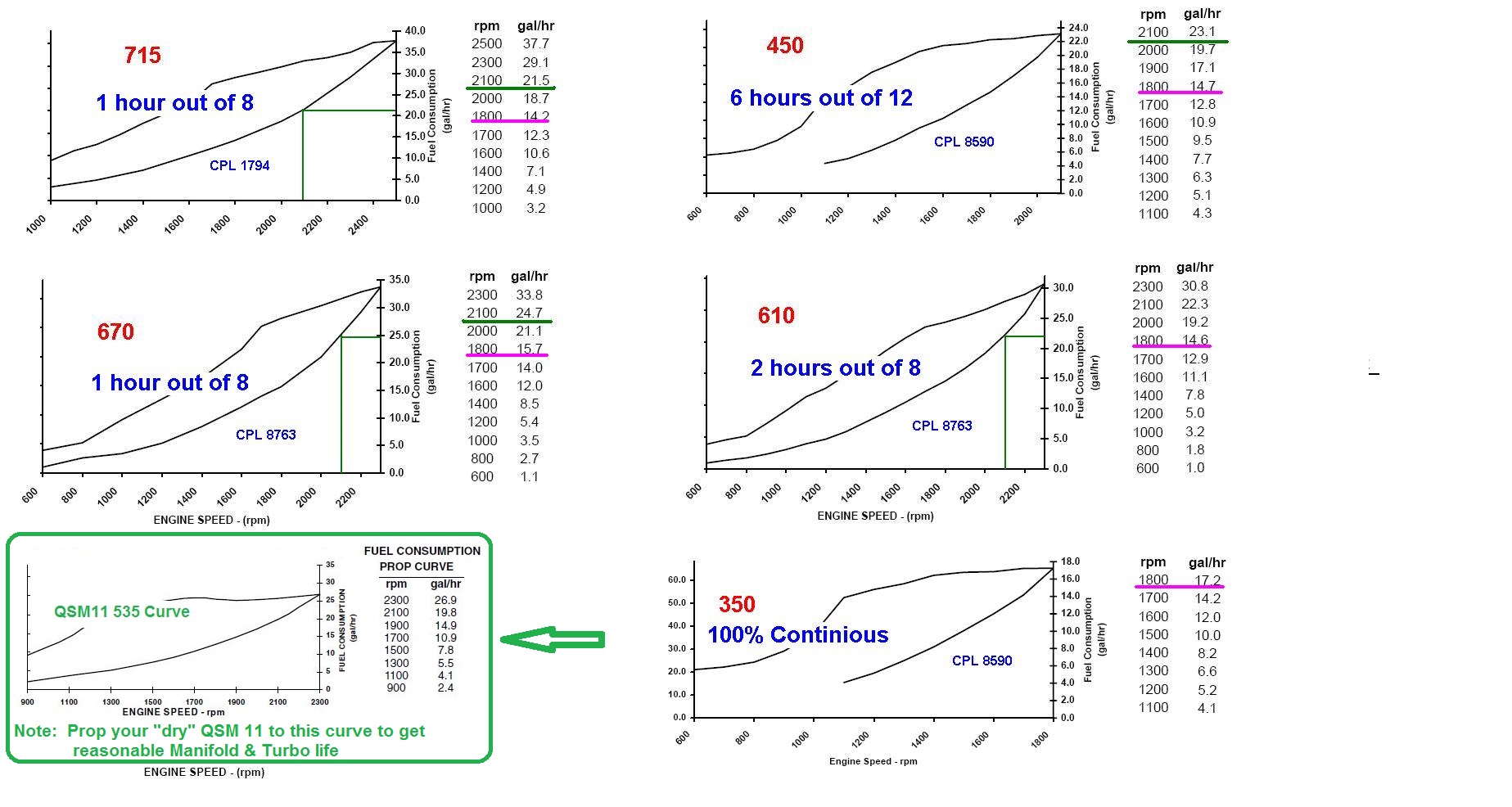
What you want to do is decrease pitch (which reduces overall engine loading) until your fuel burn is at or below 18.6 GPH at 2000 RPM. Sure, you will lose some overall WOT speed, but your engine loading will come down noticeably at ALL RPM’s below 2300. When the dust settles, your happy vessel cruise speed will now be 150-175 RPM higher than it is now and overall engine loading will be in the safe GREEN zone. Your manifolds, etc. will thank you and you’ll be pumping more of those vital engine “cooling & lubricating” fluids to boot… You can burn 21-22 GPH, but you have to do it at 2100 RPM to control the heat.
The magic QSM11 formua to prevent exhaust issues and extend engine life is:
Reduce the load at CRUISE RPM (1900-2000 RPM) to under 20GPH (400 HP). Period.


